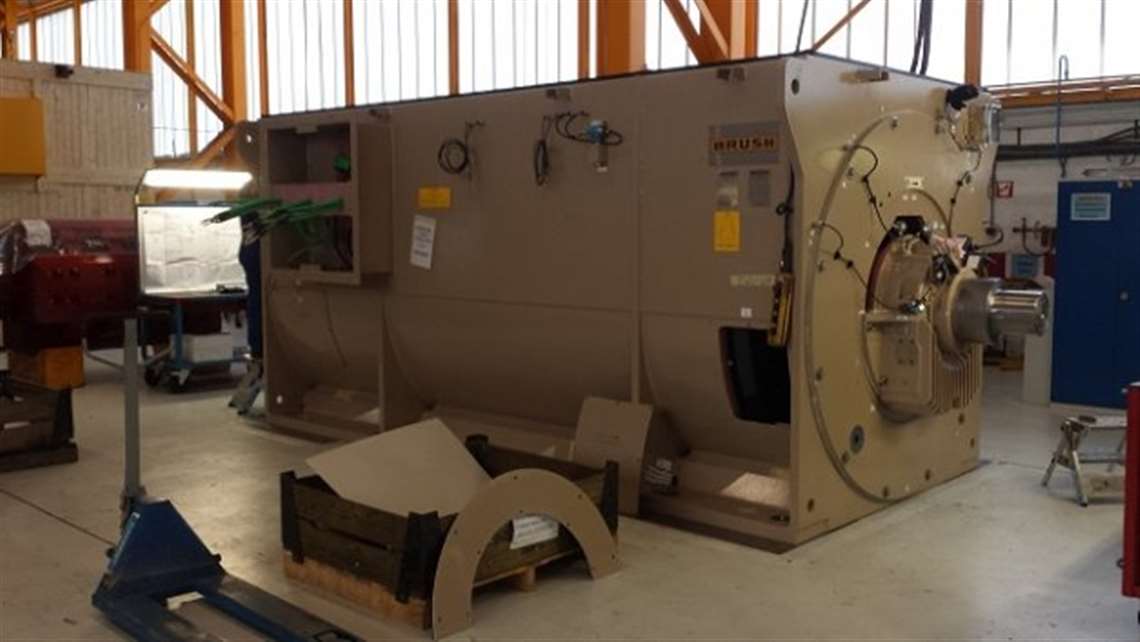Unlocking The Power Of Geothermal Energy
01 April 2016

Renewable, geothermal energy production equipment tested to the limit

An English manufacturer of a range of power generation equipment including turbogenerators and switchgear is helping unlock reserves of energy at a remote South American geothermal facility.
Brush, based in Loughborough, England is supplying two specially-modified, 27.6 MW, four-pole, 1500 r/min generators to the site with a rated voltage of 9500 V and a power output of 32,471 kVA. The generators are powered by 15 MW turbines and have been designed to withstand the challenges presented by extracting geothermal energy in high altitude conditions.
Ensuring the equipment used to produce the power can endure harsh elements is imperative.
At its core, the temperature of the Earth is estimated to be more than 6000o C and in geologically favorable places this heat can be used for electricity generation.
Geothermal energy is a renewable resource which can be harnessed from underground reservoirs located below ground, containing hot rocks, water and steam. Boreholes are drilled into the reservoirs and the hot water and steam are then piped up to a geothermal power plant, where it is used to drive steam turbines which in turn drive generators to produce electricity.
Located on an Andean plateau 4500 m above sea level in the north of Chile at Cerro Pabellón, the first geothermal plant in South America is under construction following a US$320 million investment, financed through resources provided by Enel Green Power. Cerro Pabellón is thought to be the first binary geothermal plant in the world to be built at such a high altitude. It is due to be completed in 2017.
Regions of geothermal activity are rich in toxic natural gases. Brush said its generators are suitable for these corrosive environments and adapted to be extra protected against hydrogen sulphide (H2S) and sulphur dioxides (SO2), which pose a substantial operational hazard.
When H2S and SO2 are abundant, they can bond with water which can be highly damaging to equipment when it condenses on cool surfaces, the company said, adding that the Brush four-pole generators have specialist anti-corrosive paint layers to protect against long-term damage.
Brush, which also makes power management systems and transformers, added that geothermal energy is extracted by the Rankine Power Cycle, which uses an organic substance as a medium to transfer the heat — in this case n-Pentane, a flammable gas. If n-Pentane were to leak out of the turbine, it would create a hazardous explosive area. As such, the generators are fully certified for operation in Zone 2 areas, in which an explosive atmosphere, while infrequent, may occur during operation.
At high altitudes the air is much thinner. Due to this effect, all high voltage electrical clearances need to be much greater to reduce the potential for any damaging partial discharge activity in the stator windings. However, as the inherent design of the generator is fixed, Brush said it had to find a way around the issue.
“The thin air posed significant challenges for us to overcome, said Erwin van Campen, project manager for Brush. “Reliability of the generators is the key to any energy creation, to ensure homes and businesses receive dependable power. Because of the pressures put on the electrical insulation at 4500 m, we have de-rated the voltage of the generators from the usual 13.8 to 9.5 kV to counteract any potential energy-loss scenarios.
“We also had to re-evaluate our approach to cooling the generators due to the thinner air that circulates inside the cooling circuit. However, at such heights ambient temperatures can reach extremes of -31o C, which poses significant challenges. For example, the generators are fitted with air-to-water coolers which means that the cooling water requires sufficient anti-freeze to stop it turning to ice.
“With a generator in normal operation there will not be any issue with the ambient temperature reaching -31o C because the load losses of the generator will ensure it stays at an acceptable temperature. Though to keep a generator at a suitable temperature during standstill in such low ambient temperatures, it is provided with heaters, which in this case are oversized to combat the local environment.
As the installation date approaches, other factors will also need to be considered, van Campen said. People can only be present at these heights for short amounts of time without suffering from altitude sickness, so maintenance will have to be looked at on a case-by-case basis, with stringent time planning.
“Cerro Pabellón is not only pushing the boundaries of geothermal energy, it is testing the limits of generator capacity in the harshest of climates,” van Campen said.
STAY CONNECTED




Receive the information you need when you need it through our world-leading magazines, newsletters and daily briefings.
POWER SOURCING GUIDE
The trusted reference and buyer’s guide for 83 years
The original “desktop search engine,” guiding nearly 10,000 users in more than 90 countries it is the primary reference for specifications and details on all the components that go into engine systems.
Visit Now
CONNECT WITH THE TEAM









